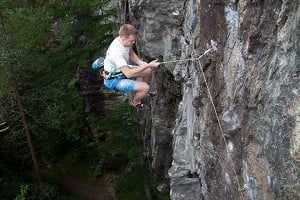
Most sport climbers need an all-round workhorse in their rope collection - in fact, many get by with nothing else. In this comparison review of single ropes for sport climbing we haven't considered the 11mm cables that you might encounter at climbing walls and outdoor centres; neither have we looked at the more specialist lightweight skinny ropes or triple-rated ropes (UKC Comparison Review here). The aim here was to check out the mid-range of ropes on the market, models designed for regular hammering by the active sport climber. This is the sort of rope that many of us buy and use for several years, often as our one and only sport rope, or even as a short pitching trad rope where a single will do. The thinner lightweight ropes, which often come in at under 9mm in diameter, are all very well for that top end redpoint ascent - but if you are just a normal climber then you are probably more interested in getting something that still performs well, but lasts a bit longer too.

Testing
The ropes we looked at range from 9.6mm to 10mm. They were used over a period of a few months (where possible) in the UK, Spain and Italy. Ideally we would like to test how the rope performs after a year of consistent use, however we don't have the time to test them for such a long period. We do continue to use them after the review has been published and we will update the review if we find that a particular rope performs differently than expected. Most were used exclusively sport climbing, both indoors and out, although one has been used a fair bit for dry tooling too!
Factory Coiling
Ropes from the shop come in either factory loop coils or factory lap coils. The former puts the ropes in spiral coils, as the old timers used to coil their ropes, and is less desirable since it puts a twist in the rope for every coil. Any new rope with factory loop coils needs carefully flaking out in order to get these twists out before use. Failure to do this can result in a rope being damaged if you use an inflexible lower-off with a kinked rope, and the rope sheath gets twisted on the core. Once this happens, the rope will never perform well (although its strength won't be compromised). Factory lap coils are similar to the normal way of coiling a rope, looping from side to side without adding any twists to the rope. Factory lap coiled ropes are much better since these can be flaked out quickly and easily and used pretty much straight away.
Diameter
There is a standard method for measuring the diameter of a rope which is where the publicised diameters come from. Despite this, some ropes can appear thinner than expected when compared to ropes claiming similar diameters. For the purposes of this review we have considered ropes in the range from 9.6mm to 10.0mm. The only real bearing on usage is whether or not the thicker ropes will perform with your chosen belay device. Some break-assisted belay devices can get quite grabby when paying out, especially with anything of 10mm and over, so it is often a good idea to have a test run in the shop before buying if you can.
Rope Feel
You will often hear people talking about ropes in terms of softness and hardness. A 'soft' rope is exactly that, soft to feel and more supple. This tends to make it easier to use and clip but can make a rope less hardwearing. Other ropes feel a bit more wirey and 'hard'. These are not as supple, can show some slippage through assisted-braking belay devices, but are usually more hardwearing.
UIAA Falls
The international standards for measuring ropes are clearly defined but quite complex - we could write an entire article just on this. For most people, it is enough to know that the UIAA Falls rating is a relative comparison of a rope's durability. It doesn't mean you should ditch the rope after the prescribed number of falls, although if the falls are all significant, then you should certainly check it for wear and tear.
Maximum Impact Force and Elongation
A rope's ability to absorb energy is indicated by its Maximum Impact Force, a measure of the maximum tension in the rope when a climber falls. A low impact force is good for most scenarios but this usually also means a more elastic rope and greater elongation, hence a longer fall. This is something where a balance is required. That's important if considering much thinner singles, but it's of less significance when choosing one of the ropes featured in this review.
Weight
Most ropes offer a figure of weight/metre. This is important when weight saving but less so for the ropes in this review, which are all in the 60g/m to 68g/m range. The thinnest single ropes available now tend to have weights of around 52g/m which adds up to 300g less weight on a single 30m pitch - not that much, although thinner ropes also suffer less drag and hence it will tend to feel significantly more then 300g lighter.
Dry Treatment
The majority of durable ropes have a 'dry treatment' although this varies from rope to rope since different manufacturers use their own proprietary treatment. The main aim is to keep the rope dry and hence light during use, especially if winter climbing. However, it also has benefits of reducing friction on both the rope surface, and internally, which reduces drag and wear and tear. To be certified as a UIAA Dry Treated rope, the amount of water absorbed by a rope cannot be greater than 5% of the rope's weight. For comparison, untreated ropes absorb around 50% and ropes claiming to be 'dry ropes' still absorb 20% to 40% of their weight in water. There are a number of dry treatments that don't achieve the UIAA standard but are still useful and worthy treatments since they tend to reduce wear and tear and can improve performance.
|
Model |
Technical Data | Summary |
|
Tendon Ambition £125 (60m) |
Diameter: 9.8mm UIAA Falls: 9 Max. Impact Force: 7.1 kN Weight: 64 g/m Dry Treatment: Yes |
An excellent rope that handles well and appears to be durable. The feel is so compact that it could almost be mistaken for a skinny lightweight rope. At only £125 for a 60m it is great value.
|
|
Edelrid Python £110 (60m) |
Diameter: 10mm UIAA Falls: 7 Max. Impact Force: 8.9 kN Weight: 64 g/m Dry Treatment: No |
A highly durable all-rounder. When it comes to wear and tear it's hard to match - it just keeps going and going. A high impact force means it doesn't give the softest catch. Excellent value makes it a good choice. |
|
Mammut Galaxy Dry £170 (60m) |
Diameter: 10.0mm UIAA Falls: 10-11 Max. Impact Force: 8.5 kN Weight: 68 g/m Dry Treatment: Yes |
A familiar workhorse that handles well for clipping and appears to be durable. Behaves like a fatter rope in use which makes handling in belay devices grabby at times. Quite expensive. |
|
Petzl CONTACT £115 (60m) |
Diameter: 9.8mm UIAA Falls: 7 Max. Impact Force: 8.4 kN Weight: 60 g/m Dry Treatment: No |
Handles well but may not be the most durable in the long run and does pick up dirt quickly. At £115 however, this is among the best options for those on a tight budget. |
|
Edelweiss Curve Unicore £140 (60m) |
Diameter: 9.8mm UIAA Falls: 9 Max. Impact Force: 8.1 kN Weight: 61 g/m Dry Treatment: Yes |
At £140 (60m) this unicore rope is in the mid-price range and it performs and handles exceptionally well. This makes it feel stiff initially but it softens up with use. A quality offering. |
|
Sterling Velocity £165 (60m) |
Diameter: 9.8mm UIAA Falls: 6 Max. Impact Force: 8.8 kN Weight: 62 g/m Dry Treatment: No |
The softest and best handling of the ropes on test. A tight weave and core treatment contribute to good durability. On the expensive side. |
|
DMM Orbit £175 (60m) |
Diameter: 9.6mm UIAA Falls: 8 Max. Impact Force: 8.7 kN Weight: 61 g/m Dry Treatment: Yes |
The thinnest prescribed diameter on test although it didn't feel substantially different to some of the thicker ropes. The softness and its tendency to pick up dirt means that it probably won't be the longest lasting, and it is expensive. |
|
Beal Booster III £135 (60m) |
Diameter: 9.7mm UIAA Falls: 8 Max. Impact Force: 7.3 kN Weight: 61 g/m Dry Treatment: No |
If you are after a very solid and reassuring single rope which you want to last for a long time, then this unicore rope is a good choice at a decent price. It is stiff in use and doesn't handle well. |
Tendon Ambition - 9.8mm

The Ambition is a rope designed for heavy duty usage whilst maintaining good performance. Although this version doesn't have the SBS system it does come with an extremely tight weave, making it feel smooth. The Ambition also has Tendon's 'Complete Shield' protection which is a dry treatment that uses teflon to stop the rope absorbing water and increase abrasion resistance. It does make the rope a little heavier and complies with the UIAA Dry Treatment standard.
The rope was supplied factory loop coiled but with a mid-point reverse. This meant that you could flake it out doubled and then pull it through to get most of the twists out, although it usually took a few pull-throughs to get it fully free. The initial feel was a robust rope that felt very compact and not particularly supple. This softened a bit after usage but it is one of the harder ropes on review. As a consequence handling is not quite as smooth as others though still perfectly adequate, and made slightly better by the fact that it feels a lot thinner than its prescribed 9.8mm.
The tight weave on the sheath is a bonus for dusty crags where ropes can get filthy pretty quickly. This rope seemed to be much more resistant to discolouration and turning your hands black when belaying. It did mean that it was quite slick through assisted-braking belay devices like the Gri-gri and the Click-up but this helped in handling overall.
It is also worth noting that the Tendon Ambition has a remarkably low Impact Force which it combines with only a slightly higher than average dynamic elongation. This makes it good for soft catches and falls in more marginal placements, although the latter aspect is obviously less important for sport climbing.
Conclusion - An excellent rope that handles adequately and appears to be durable. The feel is so compact that it could almost be mistaken for a skinny lightweight rope. At only £125 for a 60m it is great value.
October 2018 Update - The rope has been heavily used and has had its worn ends chopped but remains good in handling and shows limited wear away from the ends.
Edelrid Python 10mm

Out of the packaging the rope requires careful uncoiling due to it being loop coiled. In terms of feel it comes out a little on the stiff side but softens nicely. To further qualify 'softens', this is by no means a soft rope - it just hits a good balance between handling and durability. At 10mm it's certainly not the lightest in the test, but this is more than adequately compensated for by the rope's level of durability. Throughout extended use it has obviously shown signs of wear, particularly around the critical point of the tie-in and 1.5 metres below it, but nothing so significant that it has had to be chopped to a lower point. Obviously the high wear points increased in diameter (as worn ropes do), but in general the rope has retained its 10mm spec throughout, something that is likely down to the heat treated Thermo Shield technology.
Another final positive, is that the ends of the rope are exceptionally well sealed. With some of the ropes in this review, the labels that are around the end can be somewhat superficial, leading to litter around the crag or the ends splaying open and out. These have been thoroughly heated and sealed and are actually the only rope we have that you can still see the specs (i.e. diameter + length) on it.
It has no dry treatment, making it unsuitable for those who want to use one rope for sport climbing and winter climbing. There's also quite a high impact force which means it doesn't give the softest catch.
Summary - A durable rope that performs and handles well, which is something quite remarkable considering it's also the best value too. If you're after a workhorse then look no further - for affordable performance it is hard to beat.
October 2018 Update - The rope has been heavily used and, nearly two years on, is only just beginning to show signs of wear and even then only around the tie-in points.
Mammut Galaxy Dry - 10mm
The Mammut Galaxy has been a stalwart of sport climbing for many years. I remember using one back in the 1990s when we weren't even sure what sport climbing was. Since then there have been many new developments in rope technology, although the Galaxy itself remains relatively unchanged. It is described as 'a hardwearing and durable workhorse for indoor and sport climbing use'.
The Galaxy has a very high UIAA Falls rating of 10-11 which illustrates that it is aimed at the heavy use market. It comes in a Classic and Dry version. We used the Dry version which has a coating to prevent water absorption and increase abrasion resistance, and complies with the UIAA standard.
The rope was supplied factory lap coiled which makes it extremely easy to use straight from the packaging. Mammut need credit for this since only Petzl of the other ropes reviewed have had the foresight to supply the rope in a manner which makes it useable straight from the pack.
The initial feel was soft and supple but also quite thick. When you consider that there is only a claimed 0.4 of a millimetre between all the ropes in this test, the variation in feel is quite considerable. This certainly felt thicker than any of the other ropes and handled accordingly in the various belay devices. It was quite grabby in the Gri-gri 2 and Click-up but still performed adequately - although it did take some getting used to.
What it might lack in belay handling it made up for in clipping handling and in durability for the time we used it. The soft sheath did pick up grit and blacken hands but the rope seemed to keep performing. Galaxy ropes appear to have a period where they wear and get very slightly furry, but then they settle down and basically look and perform the same for ages.
Summary - A familiar workhorse that handles well for climbing and appears to be durable. It behaves like a fatter rope in use which makes handling in belay devices grabby at times. At £170 for a 60m it is quite pricey, but it is a reliable choice.
October 2018 Update - The rope has had only light use but is showing no signs of wear and tear and retains good handling.
Petzl CONTACT - 9.8mm

The CONTACT has a soft and smooth handling which runs well through either assisted-braking belay devices or a traditional device. It is a soft rope which is a delight to use, and has a consistent feel throughout its length.
Petzl have used a new technique for sealing the ends of the rope. This technology they call UltraSonic Finish uses ultrasonic sound to bond the sheath and the core at either end to create a durable seal. So far this is proven to work well and after a number of months on test the ends have stayed completely fray free and look essentially like new.
Of the ropes in this test, only Petzl and Mammut have paid attention to the process of factory coiling and how important this is to the overall quality of the rope. Petzl use a specific coil that means the rope is ready to go when you first receive it. You won't have to spend ages flaking it out to get rid of all the kinks or twists.
Unfortunately the CONTACT is not dry treated so if you're looking for a rope to be used in wet conditions this isn't it. The lack of a treated sheath and its softness means that it seems to pick up dirt quickly. On my second day using this rope I noticed that the colour had changed distinctly from a metallic blue to a dark blueish grey colour. Having said that, I was climbing at a slate quarry with very fine grained rock on much of the ground although this has continued at other crags since.
Summary - The CONTACT handles exceptionally well but may not be the most durable in the long run and does pick up dirt quickly. It is a good price though and for those on a budget it is a good choice.
October 2018 Update - It has done okay but as a soft rope it wasn't expected to last that long. Under the circumstances it has performed well. The ends have been chopped once and the rope is still being used.
Edelweiss Curve Unicore - 9.8mm

The rope came factory loop coiled in packaging but in doubled first so that the twists distribute if you can flake it out initially on a long route. It is still best to reverse spool the rope after unpacking and run it through a dangling quickdraw a few times at home.
The Curve initially feels extremely hard and stiff but softens up quite quickly. The single braid sheath gives a silky smooth feel and it handles well for a rope that felt so hard. The tight sheath also has the benefit of protecting the rope core. On a week climbing at dusty Italian crags this rope was the top performer, staying clean throughout and maintaining its (bright) colour well. It showed few signs of wear and tear and got the team vote for best rope of the trip.
It is mid-range on Maximum Impact Force but quite stretchy, giving it a reasonably soft catch.
Summary - At £140 (60m) this is a mid-price option, but it does perform and handle exceptionally well for a rope which initially felt stiff. In short, it is one of the best ropes around.
October 2018 Update - This rope hasn't been heavily used but is still looking and handling virtually as new.
Sterling Evolution Velocity - 9.8mm

The rope was factory coiled double in a very tight bundle. This meant that it could be uncoiled as a double rope and then flaked out singly, however this wasn't obvious and it was quite a struggle to flake out for the first time. After a couple of ascents though it had unkinked and performed well.
The initial feel was extremely soft, the softest of all the ropes on review - this is curious since Sterling state it has "Just the right amount of stiffness". It felt to us that it had hardly any stiffness at all so it is difficult to guess exactly how soft Sterling ropes can get if this was supposed to have some stiffness! Having said that, the handling was beautiful from the off - an incredibly smooth rope for clipping and handling through belay devices.
The sheath has a relatively tight weave despite the rope's softness, and ours was an incredibly bright orange colour. This has the advantage of standing out in photos and at the crag, but the disadvantage of rapidly discolouring and looking used as the rope inevitably gets a bit grubby.
While it doesn't have a dry treatment, and so is not the rope to choose if you want one rope for winter climbing as well, it does boast a CoreDry treatment that allows all the internal core fibers to move over each other more smoothly. This is said to reduce internal wear on the rope.
In addition to the good handling we found it didn't give the softest catch, with a relatively high impact force and low elongation.
Summary - The softest and best handling of the ropes on test. A tight weave and core treatment show good durability and it comes in at the upper price range.
October 2018 Update - Reasonably heavily used. It has lost its bright colour but none of its excellent handling. Showing no other siogns of wear and has plenty of life left in it.
DMM Orbit - 9.6mm
The Orbit had the thinnest prescribed diameter at 9.6mm of all the ropes we tested. It is marketed as a "do-it-all single rope for every adventure through all seasons". It has UIAA certified dry treatment and also features 'thermo control' which is described as a heat treatment which "alters the physical properties of the fibres within the rope, balancing the core and sheath to minimise slippage and prevent the rope shrinking or going stiff".
The rope was supplied factory loop coiled, and needed very careful reverse spooling to flake the rope out for the first time. The test rope was an 80m so even after this it took a few routes for the rope to properly untwist. In use the new rope felt soft and supple and handled very well from the off.
Despite being categoraised at 9.6mm the Orbit felt thicker than some of the 9.8mm ropes on test and handled as such. It was still thin enough to be smooth in all the various belay devices we had. Being soft made it more prone to twisting and it was necessary to pull the rope through a lower-off every now and then to dispel the twists - not a bad practice with any rope.
What was noticeable about this rope was its tendency to pick up dirt, leaving your hands black after a long day at the crag. This also has a negative effect on the durability since dirt is abrasive although, to be fair, we did use it at some very dusty crags in Oltrafinale, Italy. The rope has now been washed and dried and appears to be just as soft although the as-new colouring hasn't returned.
Conclusion - The thinnest prescribed diameter on test although it didn't feel significantly thinner than some of the other slightly harder ropes. The softness and its tendency to pick up dirt means that it probably won't be the longest lasting, and it is expensive.
October 2018 Update - The rope has had medium use. It has never managed to regain its suppleness despite two washing attempts and has become harder due to picking up dirt so easily. Shows signs of wear.
Beal Booster III Intensive Line - 9.7mm
The Beal Booster III is part of the Intensive line - a series that's aimed at high performance climbers, while offering added durability. The Booster itself has been part of the range since the original version produced in the mid-90s. The Booster III was introduced in 2003 so the basic rope is well-established and a tried and tested member of the Beal range. This latest version, introduced in 2015, is constructed with the unicore process. We gave this rope a full individual review back in July 2016. The Booster also comes in a Safe Control model which includes a change in pattern of the sheath at the mid-point of the rope for an extra £18 for the 60m version.
The rope feels very stiff out of the packaging although it was a bit of an effort to untangle it initially being factory loop coiled in the packaging. It is certainly a long way from being the sort of super-soft skinny which have become popular in recent years, and consequently feels thicker than the claimed 9.7mm. However use in a Click-up belay device reveals it to run smoothly, as you would expect of a sub 10mm rope.
It has the Beal Dry Cover treatment which is said to make it resistant against abrasion, repeated falls, heat, dust and moisture, and to increase its durability. This treatment doesn't comply fully with the UIAA Water Repellent test which is available on the Booster Mountain line model.
After extensive use the rope shows little sign of furring and appears to be very durable. If anything it feels to have got even stiffer with use which, compared to other Beal ropes, does seem unusual. The unicore process makes ropes stiff intially but they are supposed to soften up; yet that didn't seem to be the case with this one and other Beal (non-unicore) ropes are not characteristically stiff. As well as the other strength benefits, one notable plus point of the unicore process and the rope's stiffness is that it is incredibly resistant to twisting.
Summary - This is a very solid rope which is suitable as a sport climbing workhorse for those who want extra reassurance. You may want to go for something lighter and more supple if saving grams on the ultimate redpoint, but if you are after a single rope which you want to last for a long time, then this is a reasonable choice at a mid-range price.
October 2018 Update - Very robust and tough as nails after medium use over the last two years. The poor handling has not improved.


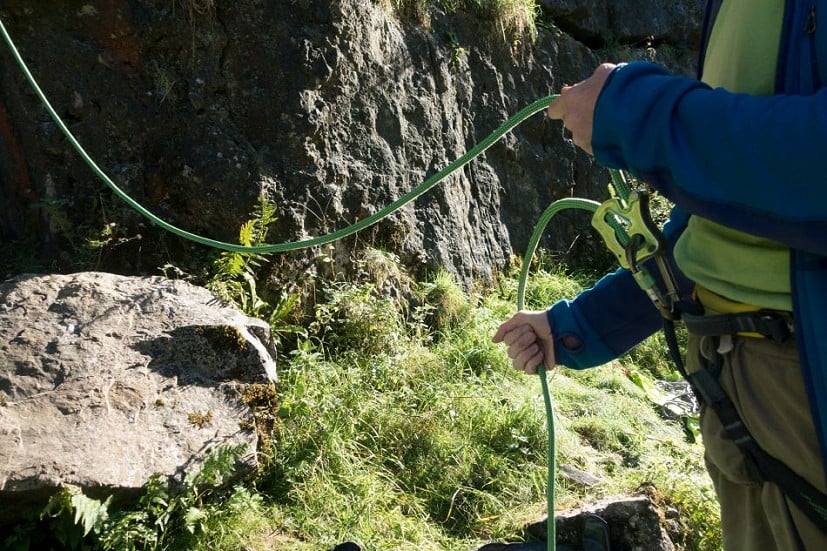
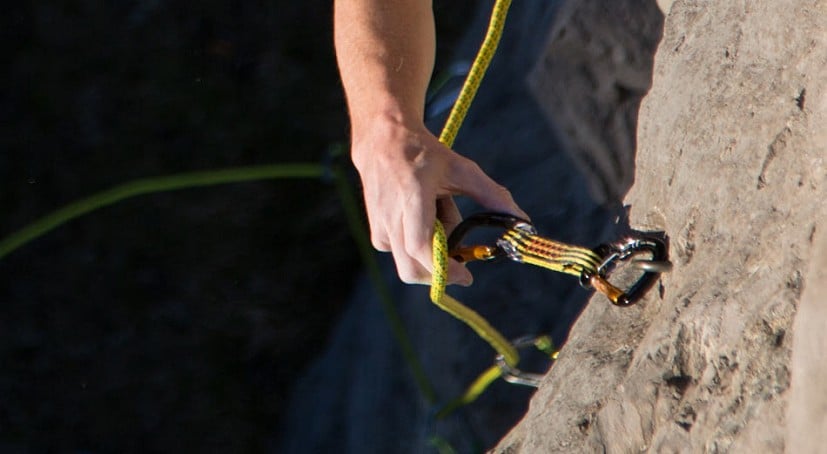












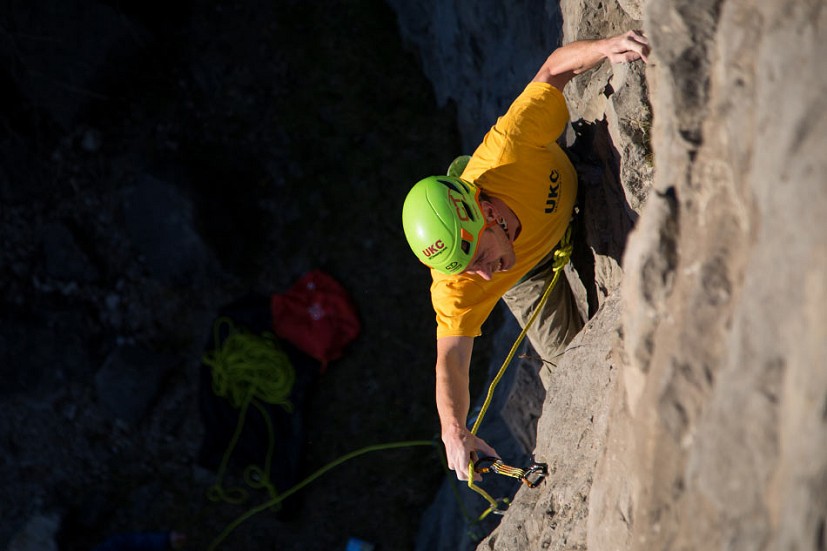
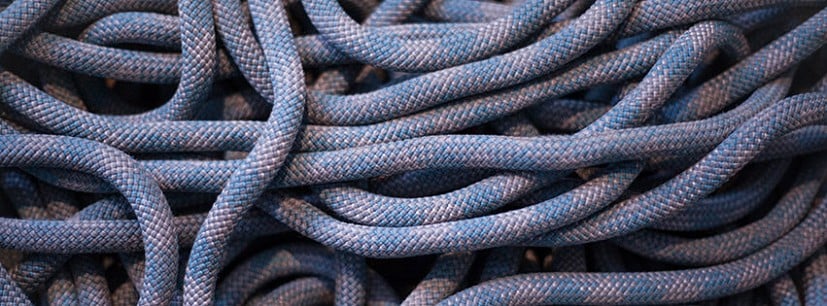
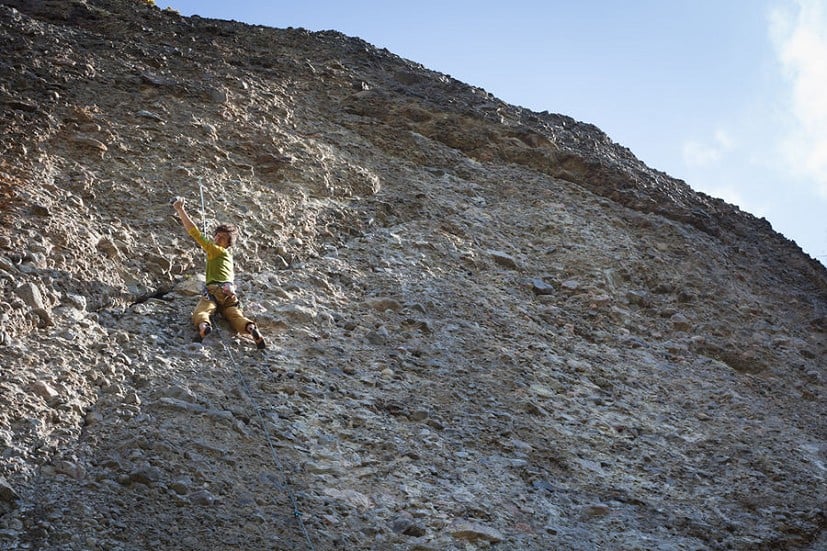
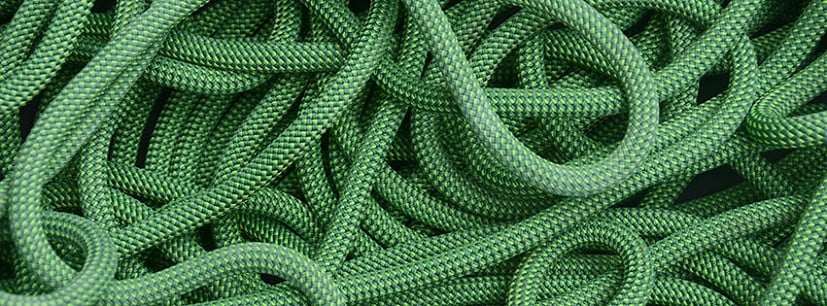
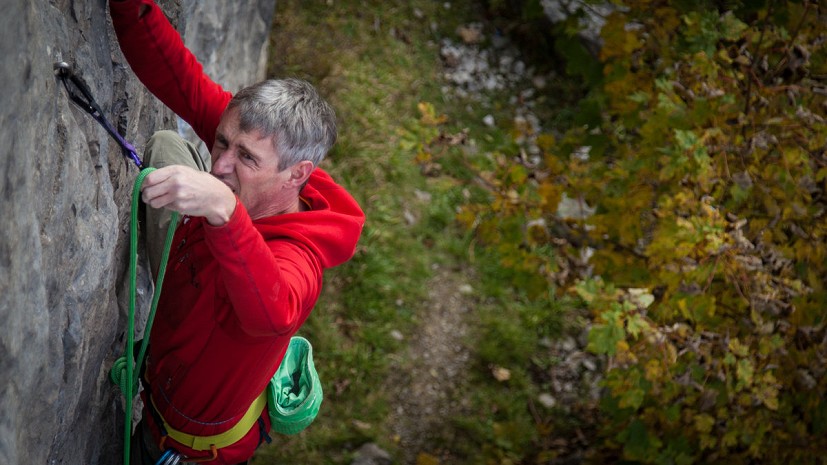
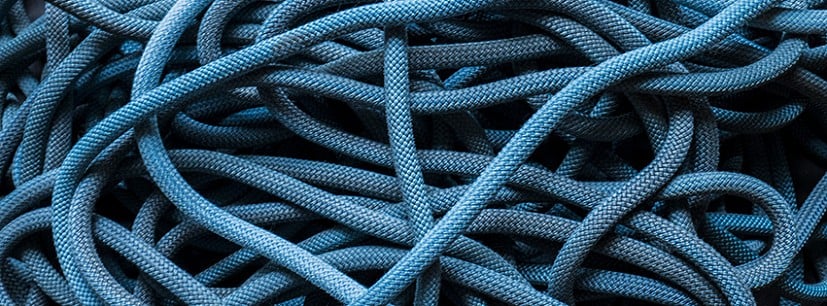
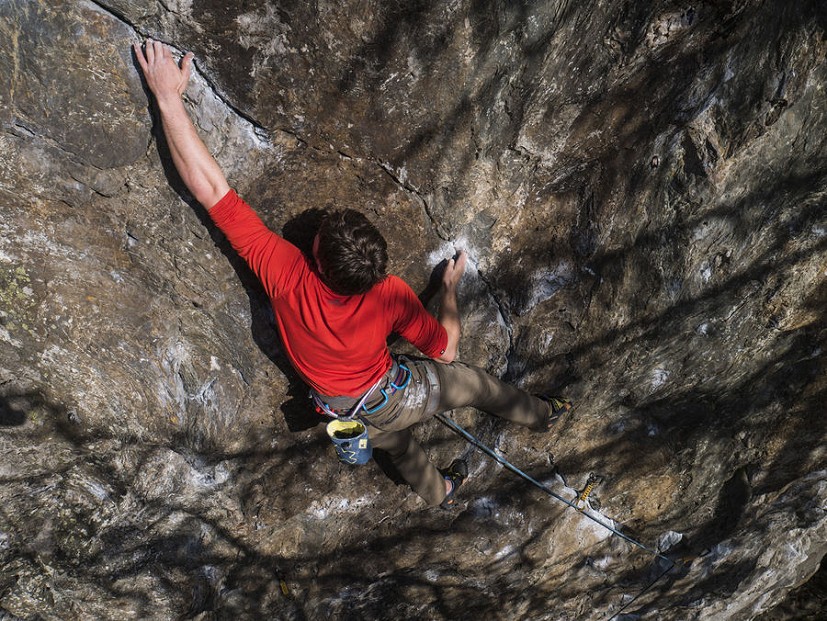
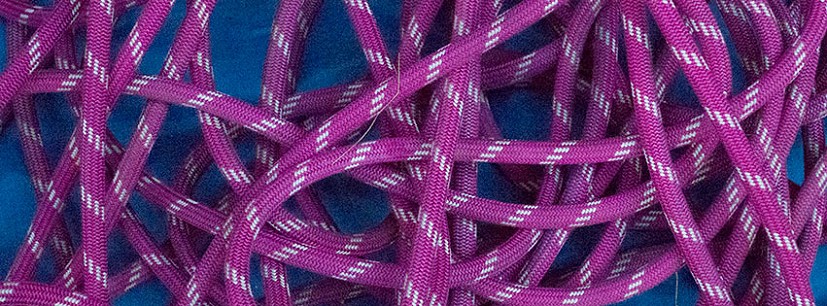
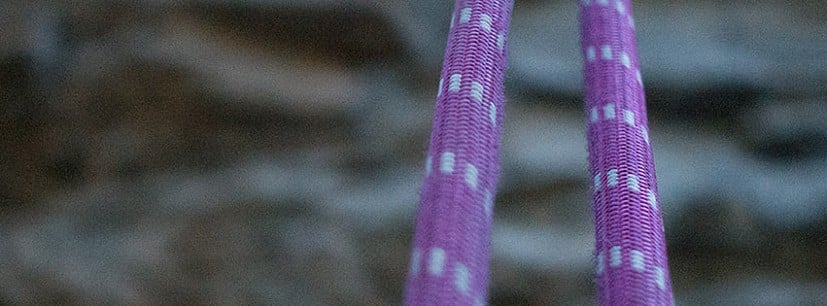
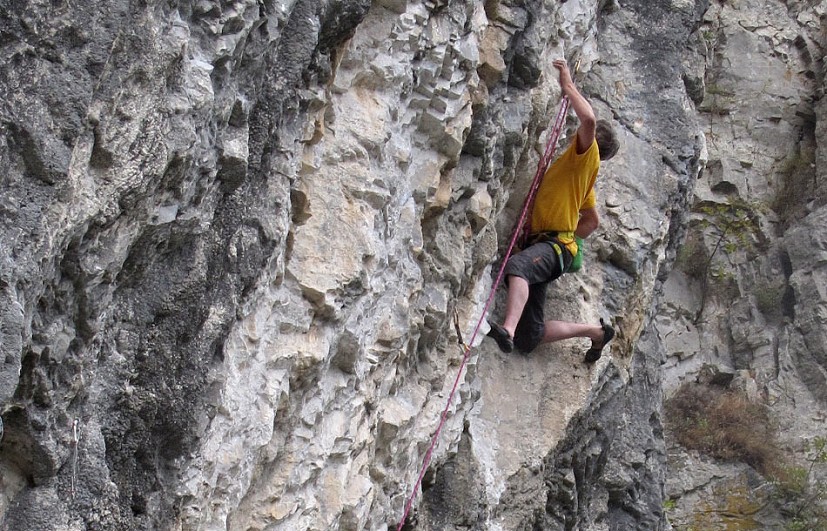
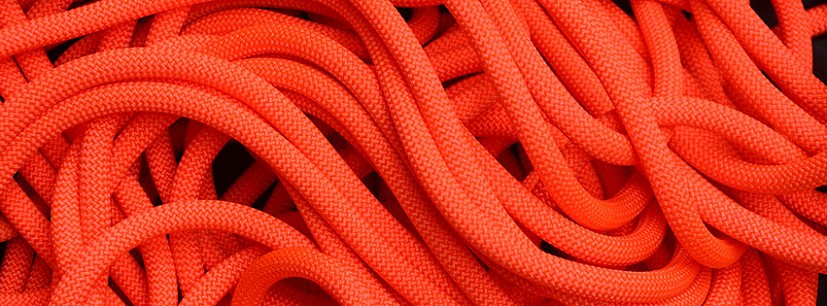
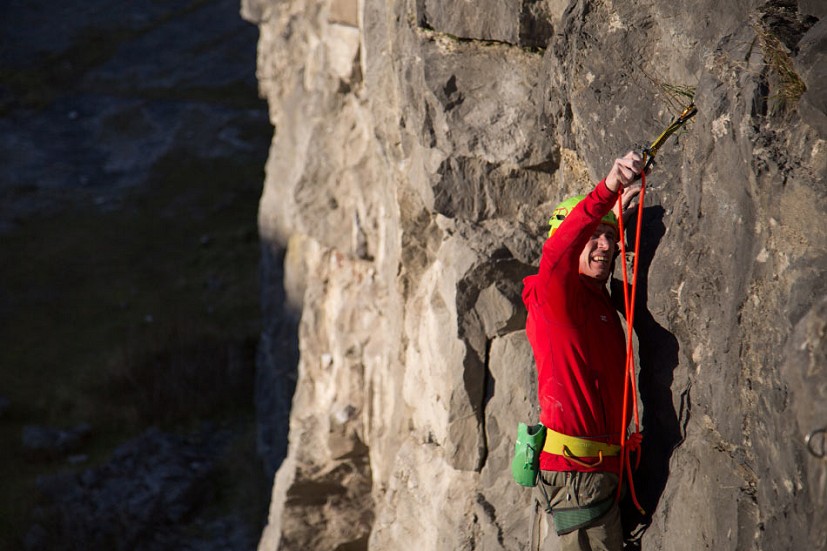
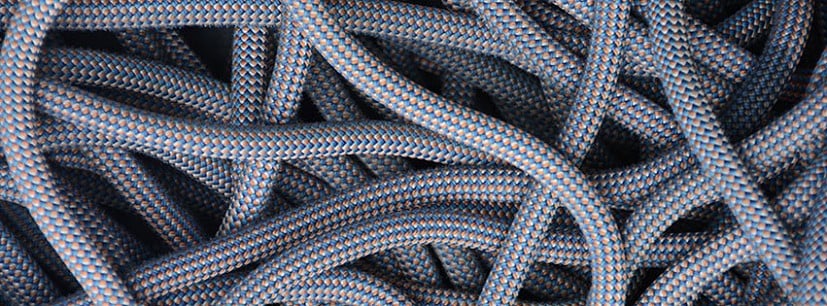
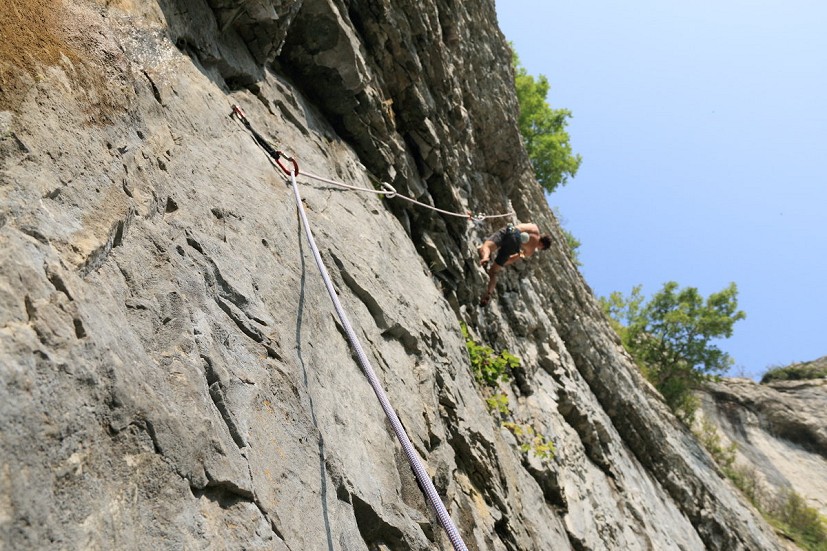

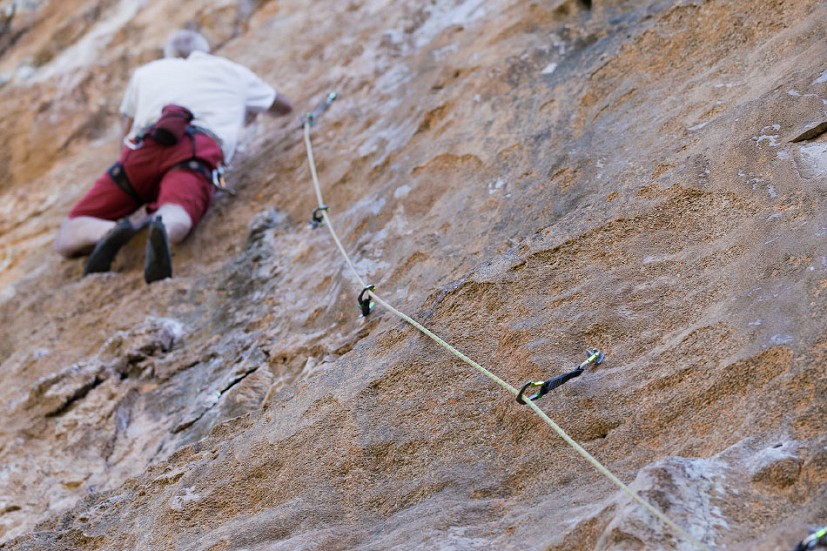
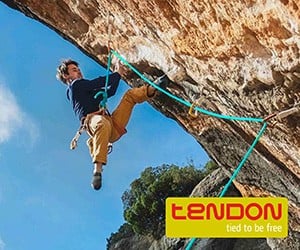
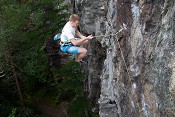


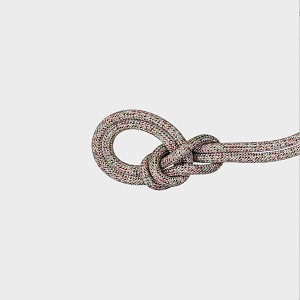
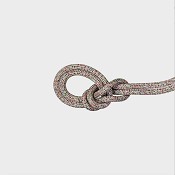
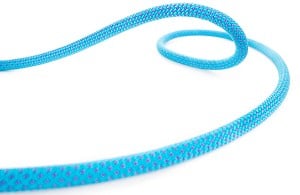
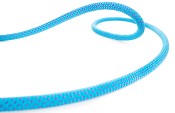
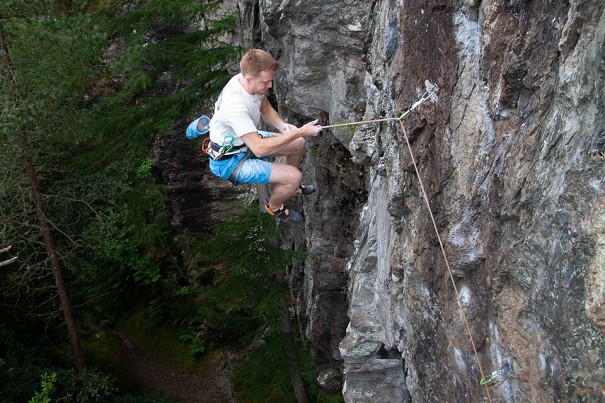
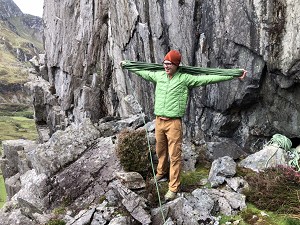

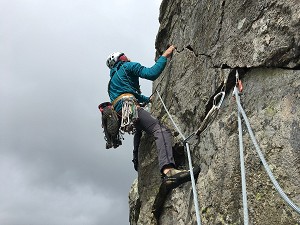
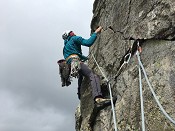
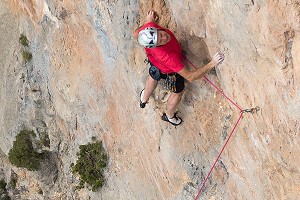
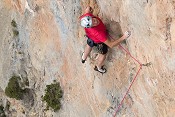




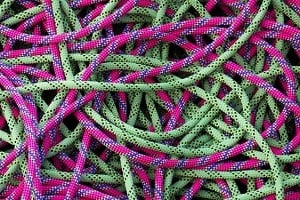

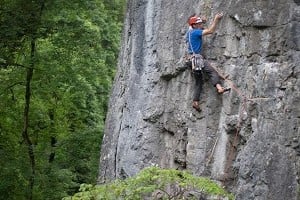

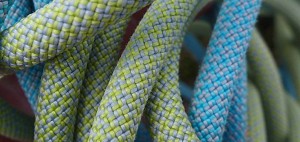

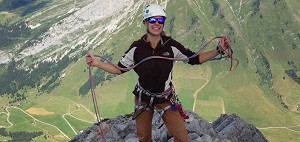

Comments